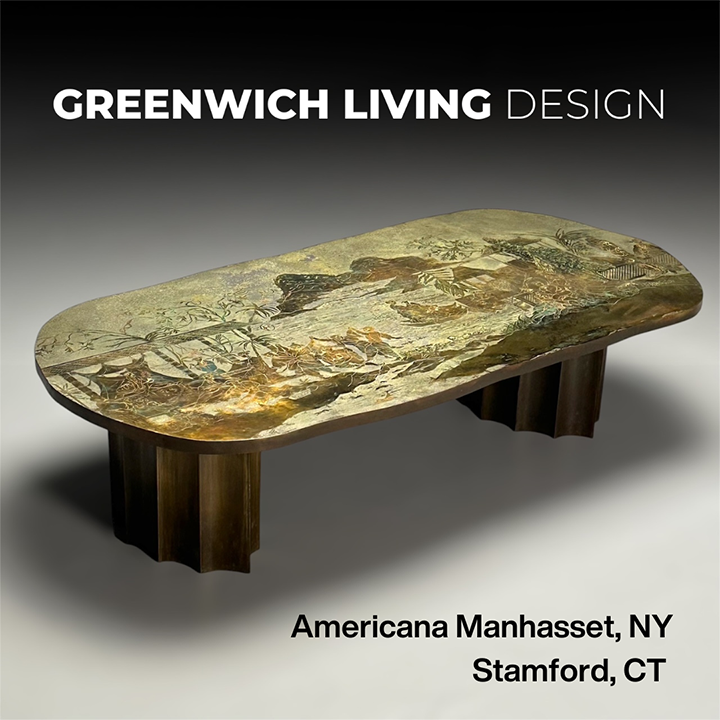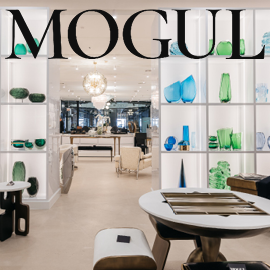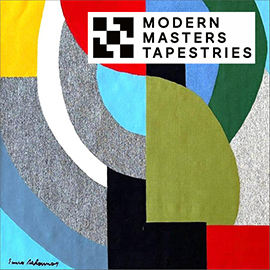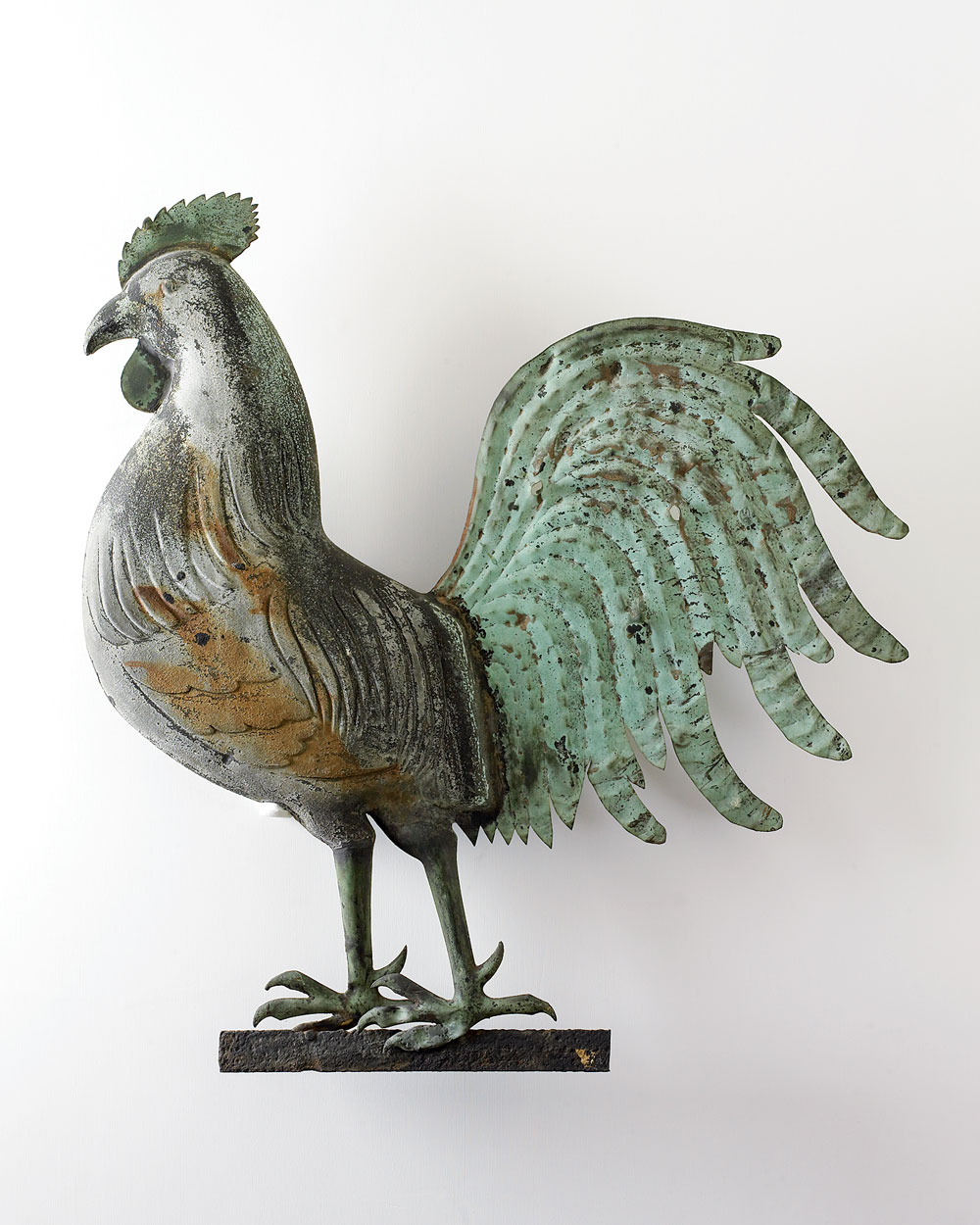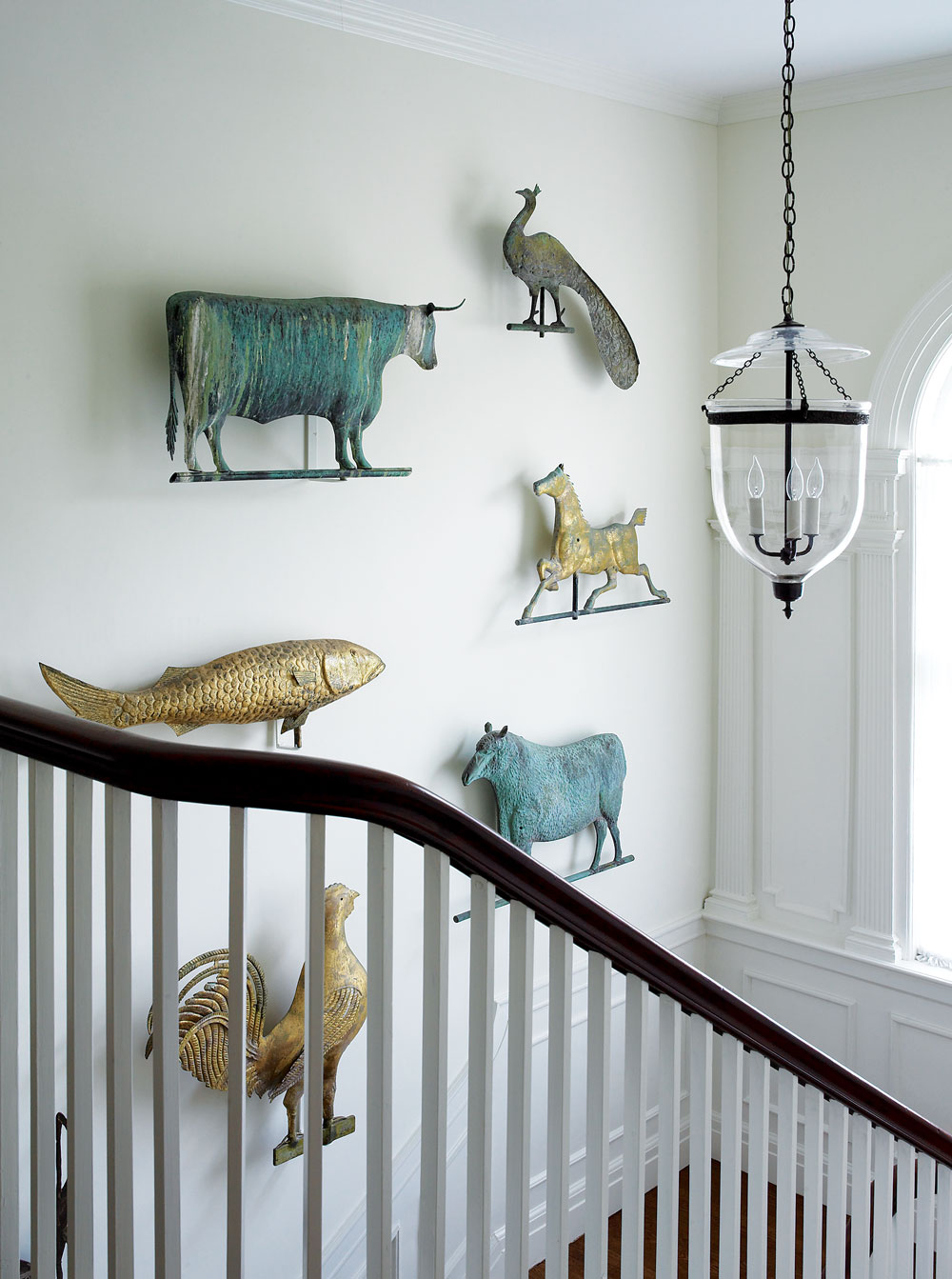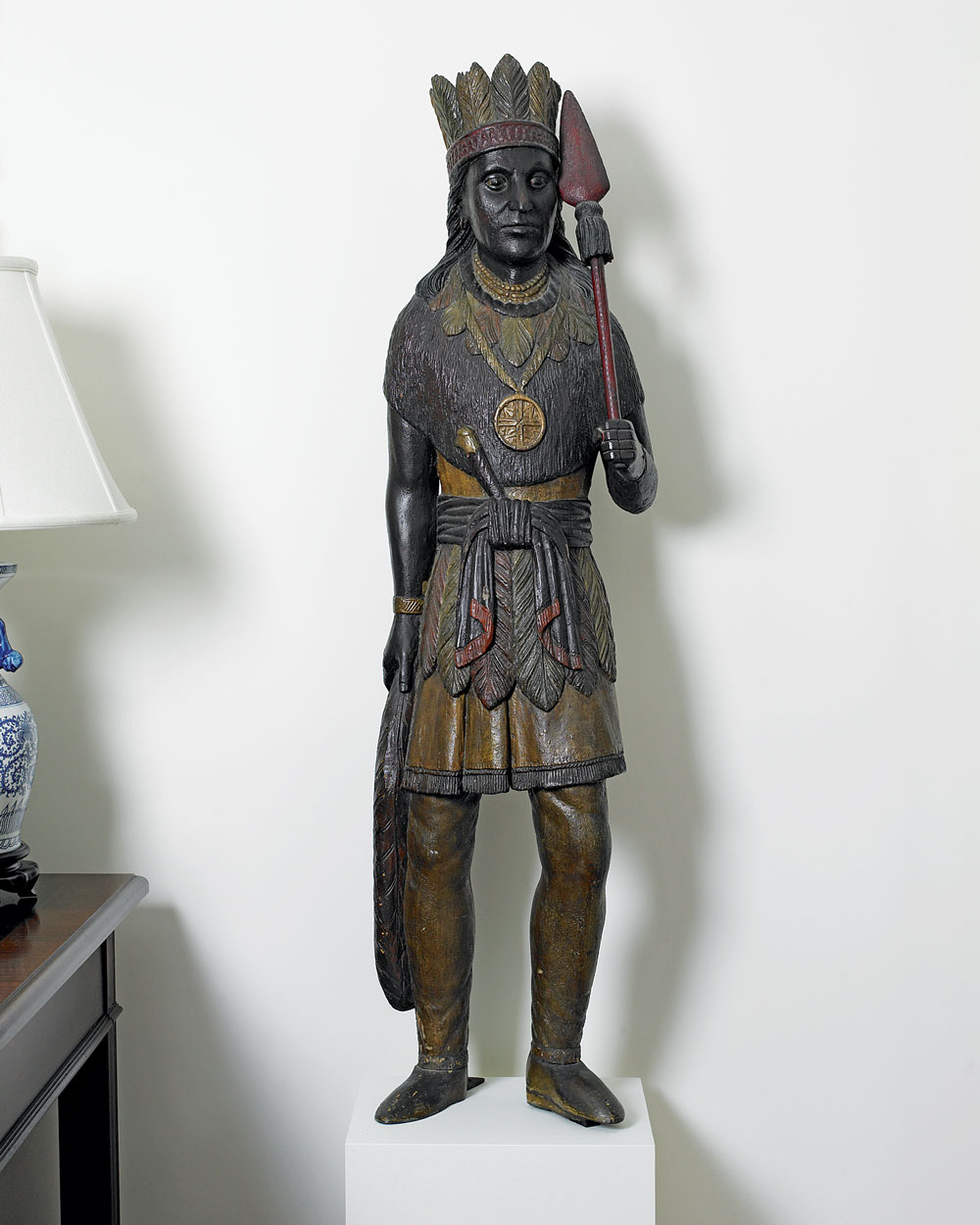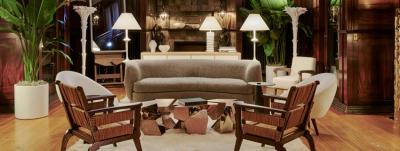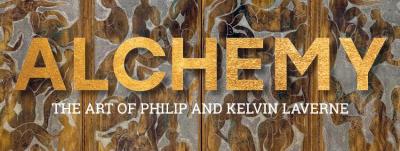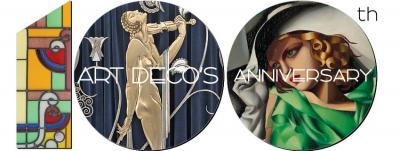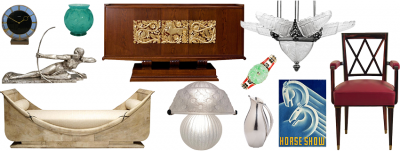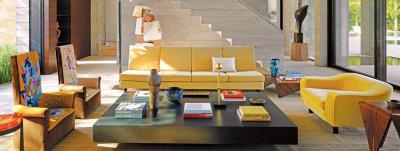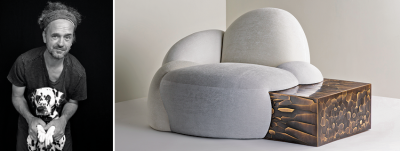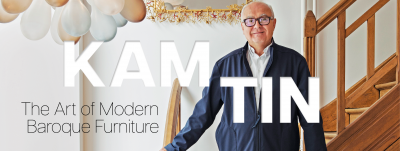American Folk Art in a Classical Setting
The classical architectural elements of a Connecticut couple’s 1912 Italianate style house provide the perfect backdrop for their captivating array of folk art. Objects acquired over the past thirty years are artfully placed within the spacious floor plan, which, with its large open rooms, allows every piece its own setting. The collection began quite unintentionally when the owners were attracted by the fluidity and movement of a running horse weathervane made in the late 1860s by Cushing and White of Boston. They have since continued to be drawn to pieces that capture the spirit, vitality, and creativity of young America as it was just coming of age, full of optimism and pride. The pieces express these feelings with style and beauty. “Folk art is what we love,” say the couple.
And what they love is exceptional. Every object in the house shares the same properties: excellent surface integrity and color, pristine condition, and an innate grace. The couple began with strong instincts for form, surface, and proportion, and a fine appreciation of humor and whimsy so often evident in folk art. Along the way, they met dealer Fred Giampietro; twenty-five years later they continue to work as a team, including the placement of objects in their current home, acquired two years ago and meticulously restored prior to moving in. In this home they have worked together on everything from the selection of antique Oriental rugs and carpets that pick up the colors of the folk arts’ original painted and gilded surfaces, to the placement of specific pieces to create a dramatic effect. “The use of natural light rather than track lighting was a particular challenge,” says Giampietro. “The outcome reinforces the goal of making the home a place of comfort and enjoyment rather than a museum.”
The couple initially had some concerns about how the exuberant forms of the folk art would mesh with the classical elements and strict geometric architecture of the house. Once they began placing the pieces, however, they realized that the seemingly divergent aesthetics were in fact complementary to one another.
Every object in the house has come from Giampietro, who says that the couple buys only the best of each form; they use worlds like “trust” and “integrity” when speaking of the dealer. Their first acquisition was a Cushing and White running horse weathervane, still in their collection. Since then they have acquired a number of other horse weathervanes. Perhaps the most splendid of the group is a unique A. L. Jewell copper horse of monumental scale now placed above the living room fireplace; it exhibits impeccable surface and kinesthetics. A rare and also very large A. J. Harris & Co. molded copper vane with a cast-zinc head hangs over the fireplace in the upstairs study. Of a Howard index prancing horse weathervane hung in the downstairs foyer, Giampietro says “It is the best I’ve ever had.” Another Howard horse vane adorns the wall of the master bath and is hung in such a way as to be seen in the mirror reflection from all angles.
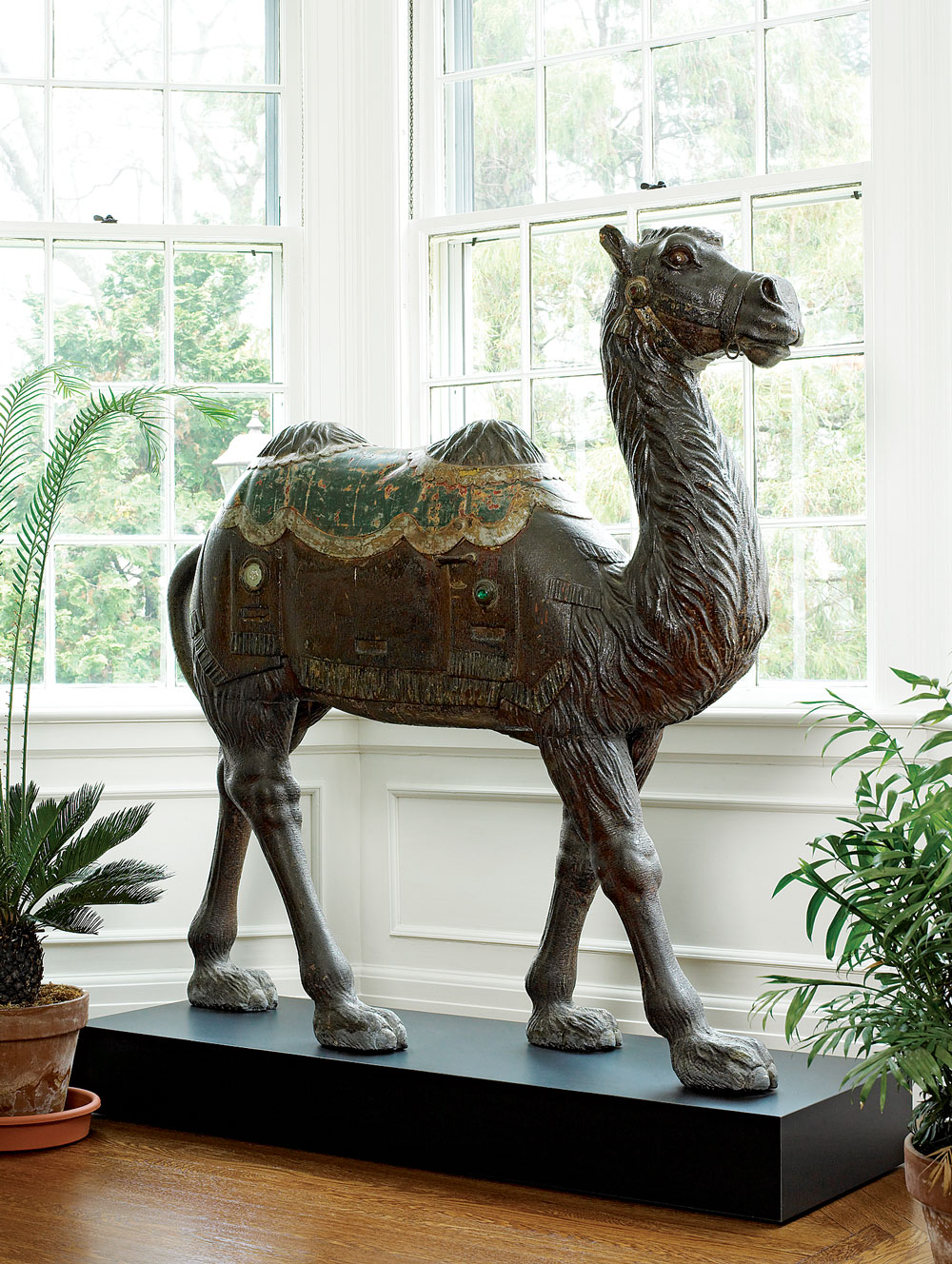
-
Flanked by ferns and bathed in sunlight, this carousel camel figure stands in front of the dining room bay window. Carved and painted, circa 1900, by German-born immigrant Charles “I. D.” Looff (1852–1919), the figure exhibits the pleasant, yet playful facial expression characteristic of the craftsman’s work. Looff, the earliest and best known of the Coney Island carousel builders, was responsible for training other skilled carousel carvers including M. C. Illions and Charles Carmel. After leaving his first shop in New York he relocated to Rhode Island and then to California.
Rooster weathervanes are also a favorite form. A J. Howard full-bodied rooster with an impressive large copper tail and cast zinc body has exquisitely and powerfully rendered claws. Another rare example by A. L. Jewell has three dimensional applied wings and tail feathers. One strutting fellow by Cushing and White exemplifies the term “cocksure.” Three sheet iron roosters from Pennsylvania are painted: one red, another green, and a third white.
Although the weathervanes are placed throughout the house, the largest concentration is along a formal staircase where over a dozen molded copper and sheet-iron weathervanes are hung. The center of the staircase features a bell jar lantern that serves to both illuminate and unite the area. Prior to mounting the vanes the couple arranged them on the living room floor to decide how they would be hung to optimize their individuality and form. “It was like a jigsaw puzzle,” say the owners. The grouping includes a sheet iron running fox that was used as a prop in the movie You’ve Got Mail; arranged by Giampietro and borrowed because the lead character’s surname was Fox.

-
The cast-iron late nineteenth-century images of George and Martha Washington, originally made as stove top radiators by Mott furnace, New York, guard the entrance to the dining room. They are rare in their survival as a pair and in the retention of their original painted surfaces. Washington was often portrayed in a toga to associate him with the founders of democracy in ancient Greece; here he wears contemporary garb beneath his robes. Period lighting used throughout the house illuminates the room. An anonymous American nineteenth-century still life with fruit hangs above the Delft tiled fireplace. A gilded mid- to late-nineteenth-century apothecary trade sign stands in the window to the right.

- A circa 1910 cowboy shooting gallery target is a study in motion. The cast-iron figure is poised to grab his six shooters from the holster. Like every object in the house, his surface is spectacular; he was probably made by William F. Mangels Company of Brooklyn, New York. He lives in the master bedroom of the home.
The couple has also gathered some arcade games that have strong graphics and form. In the library, a colorful “Shake hands with Uncle Sam” strength tester machine dating from the early twentieth century, challenges visitors to a contest. To demonstrate, the husband squeezes the outstretched had, and the dial registers “very strong.” The couple is also partial to arcade targets from shooting galleries. In the master bedroom a target, in the form of a cowboy about to draw his pistols, has a cast-iron bully’s-eye on his head and another over his heart. His sleek form is delineated with original paint. He was probably made by William F. Mangels, who created many of the amusements and carousels for Coney Island. Down the hall is a cast-iron clown shooting gallery target made in 1913 by the J. T. Dickman Company of Los Angeles. The clown is wearing a mask and a hat and is a great example of the form, again with outstanding paint and surface.
The couple’s three hand-carved carousel animals add to the playfulness of the collection. A majestic camel in the dining room is in sharp contrast to the gamboling goat in the living room next door. Both are the work of Charles Looff (1852–1919), who in 1875 built Coney Island’s first carousel. Looff also made the couples third example, a leaping horse, which also retains its pristine paint. Other carved figures include three cigar store Indians: two attributed to New York carver Samuel Robb (1851–1928)—one nearly life size and the other made as a countertop display—and a third dating before 1850 and made by Julius Melchers of Detroit, Michigan.
Trade signs and trade stimulators are also found throughout the house. A 47-inch canoe above a doorway once served as an advertising sign for Kennebec Canoes. The Planters Peanut man trade stimulator in an upstairs guest bedroom encouraged the purchase of the product by providing a peanut when a penny was inserted into a designated slot. Another distinctive trade sign advertises “904 Families Supplied with Fresh & Salt Oysters.”
After three decades the couple continues to be attracted to the spontaneity, variety, and idiosyncrasy exhibited in folk art. When combined with the intrinsic appeal of the architecture and the natural light of the house, the folk art gives this home an air of harmony and joy.
----
This article was originally published in the 7th Anniversary issue of Antiques & Fine Art magazine, a fully digitized version of which is on afamag.com. AFA is affiliated with Incollect.com.




